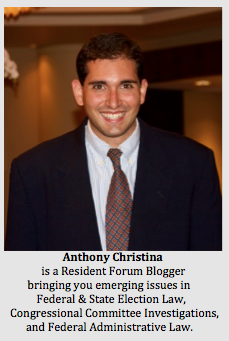Pennsylvania has a divided Government for the first time since 2010—with both chambers of the General Assembly controlled by Republicans and a Democrat in the Governor’s Mansion. Politics certainly has played a role in the budget process thus far this year, leaving little room for compromise or agreement.
On November 3, 1959, a constitutional amendment was passed that provided for annual sessions of the General Assembly. That constitutional amendment, together with an amendment of the Administrative Code in 1961, gave Pennsylvania the responsibility of passing annual budgets, which begins each year on July 1.
On December 29, 2015, Governor Tom Wolf signed a $23.4 billion, line-item-vetoed spending plan sent to him by the Republican-controlled Senate and House in lieu of a complete 2016-2017 budget package. The Governor’s purpose behind line-item-vetoing portions of the $30.3 billion budget bill passed by both chambers was to release much needed state funds to cash strapped public school districts that could not continue operating much longer.
Pennsylvania’s ongoing budget fight begs the question: what consequences, if any, are imposed if a budget isn’t passed on time, and furthermore, what happens when state agencies begin to run out of money if the budget stalemate continues?
According to the Budgeting Process Guide, put forth by the Governor’s Office, a series of various bills make up Pennsylvania’s ‘Budget.’ The Guide states:
The General Assembly makes its decisions on the budget in the form of the General Appropriation Bill and individual appropriation bills. The General Appropriation Bill contains appropriations for the executive, legislative and judicial departments, public schools, and for public debt. All other appropriations are made individually by separate special bills. The passage of the General Bill and other appropriation bills by both Houses of the General Assembly and the passage of any revenue measures which may be required to ensure a balanced budget constitute the legislative approval phase.
The Governor has the authority to sign the appropriation bills sent to him, veto the bills in their entirety, as well as veto particular portions of the bills.
By the time that the General Appropriation Bill and other appropriation bills are presented to the Governor for approval, the official revised revenue estimates for the budget year are issued. If the combined appropriations passed by the Legislature exceed the revenue estimates, the Governor has the authority and duty either to veto entire appropriation bills or to reduce the amount of appropriations in order to produce a budget that is in balance with revenues. The Governor also has the power to reduce or item veto any appropriation thought excessive or unnecessary even if the total appropriations passed by the legislators do not exceed estimated revenues. A Governor’s item veto may be overridden by a two-thirds vote of each chamber of the General Assembly. The signing of the appropriation bills and any revenue bills by the Governor is the last step in the approval stage of the budget cycle.
Drama over Pennsylvania’s annual budget is not a new phenomena. Late budgets have been passed fairly regularly in the modern era. The worst state budget fight was in 1969, when the disagreement lasted 247 days under Governor Shafer. In 1977, during another budget impasse, 6,700 state employees went weeks without paychecks, labor unions organized daily walkouts, and a melee took place on the House floor when a few representatives came to blows with each other and protesting welfare recipients. The 2007 budget fight under Governor Rendell led to a one-day furlough of 24,000 state workers.
According to Tony May who was an official in the Shapp and Casey administrations, “budget standoffs are far less disruptive than in years past” because certain government services have been outsourced and because Pennsylvania courts have held that state employees who are working must be paid.
In 2009, the Pennsylvania Supreme Court overturned a Rendell administration interpretation that would have allowed state employees to be furloughed in a lawsuit with AFSCME. In a 6-1 ruling, in Council 13 v. Commonwealth, 604 Pa. 352, 986 A.2d 63 (2009), the court upheld arguments by unions for state employees that there cannot be payless paydays for most state workers. In a majority opinion written by then Chief Justice Castile, the court upheld provisions in the federal Fair Labor Standards Act which mandated timely payment for work performed, superseding the language in the state constitution that bars payment of most state funds without an appropriation by the General Assembly. To clarify, the court went on to say, “To us, ‘shall pay’ plainly connotes shall make a payment. If a payday has passed without payment, the employer cannot have met his obligation to pay.” Council 13, 604 Pa. at 378.
The AFSCME case is one of the reasons the 2015 budget impasse has not resulted in a complete shutdown of government services or furloughed workers. In previous years those scenarios of a shuttered state government often put pressure on legislators to come to some sort of compromise given how publically the budget impasse was showcased. In 2015, counties, school districts, and non-profit social services were forced to borrow money to continue operating as opposed to completely shutting down, alleviating some of the public pressure and allowing an impasse to stretch for more than six months.
Optics aside, the 2015 budget impasse will certainly be remembered for its 200-plus day stalemate. However, the work for a complete General Appropriations Bill and related individual appropriations bills (including funding for Penn State) have yet to be completed and the crisis is now lasting well into 2016.
Published January 25, 2016
